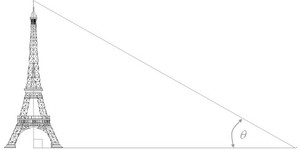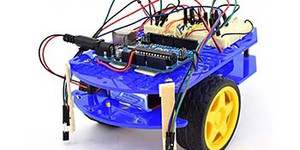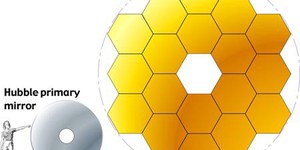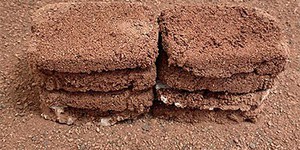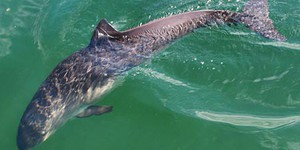Space Exploration Science Projects (55 results)
|
Select a resource
Coding Projects
Sort by
|
If you've ever wondered how tall that bridge is, or how high your kite was, then this could be a good project for you. You'll learn how you can use the mathematics of right triangles to measure the height of an object with two measurements that you can make on the ground.
Read more
Have you ever wished you could talk to an astronaut on board the International Space Station? You're probably
thinking "yeah, like NASA would ever let you do that!" Actually, they will! The International Space Station (ISS)
is equipped with its own HAM radio station. The
ISS HAM radio station allows astronauts,
cosmonauts, and space mission specialists from different nations who are on board the space station to talk
to people back home on Earth. Anyone with an amateur radio license is…
Read more
Humans cannot see infrared light, but robots can! At least, they can when they use special infrared light sensors. These sensors can help robots detect nearby objects to avoid collisions and even help them avoid driving off edges. In this project you will build your own Arduino robot that uses infrared sensors to avoid driving off the edge of a table.
Read more
In this science experiment, you will model and test how visualization of a task can change the accuracy of your fine motor skill performance. You will use the small muscles in your hands to model how your body would perform on Earth versus a space launch.
Read more
The Transiting Exoplanet Survey Satellite (TESS) is a space telescope for NASA's Explorers program, designed to search for exoplanets using the transit method in an area 400 times larger than that covered by the Kepler mission. It was launched on April 18, 2018 atop a Falcon 9 rocket. During its two-year primary mission, it was expected to find more than 20,000 transiting exoplanets, compared to about 3,800 exoplanets known when it launched. The first light image from TESS was taken on August…
Read more
Rocket design and operation is a fascinating field and analyzing the flight path provides insight into the rocket's performance. In this project, you will take measurements of the flight path to evaluate how a change in the rocket design or launch procedure impacts the rocket's performance.
Initially, while the bottle rocket expels water (or the rocket expels exhaust), the rocket gets a boost. This push is referred to as thrust and projects the rocket forward. Earth's gravity pulls the rocket…
Read more
Can you imagine designing and building a space telescope the size of a tennis court? Believe it or not, that is someone's job! Hundreds of engineers were involved in getting the James Webb Space Telescope (JWST) into space. This telescope has the potential to enable astronomers to see light from when the Universe was first formed. No one knows what amazing discoveries this might lead to, but already, JWST has delivered astounding deep space images that offer an unprecedented look at…
Read more
For a colony of humans to survive and thrive on Mars, they will need to make the most of what is available on Mars. We know from prior space missions what the Martian ground cover looks like. In this project, you will see if this ground cover can be transformed into strong construction material.
The first requirement for construction material is that it is strong so it does not collapse under its own weight. Because the mass of Mars is about 10 times less than the mass of Earth, its…
Read more
Have you ever wondered what life is like for different animals, and where it is that they roam? For example, how large is the area they live in, and why do they go to different locations? While we can set up cameras to watch animals that live on land, it can more challenging to see the lives of animals that live underwater, especially in the vast oceans. In this ocean science project, you will use satellite tracking data to learn about the activity patterns of harbor porpoises. How far do they…
Read more
The Kepler space telescope is a retired space telescope launched by NASA to discover Earth-size planets orbiting other stars. Named after astronomer Johannes Kepler, the spacecraft was launched on March 7, 2009, into an Earth-trailing heliocentric orbit. The principal investigator was William J. Borucki. After nine years of operation, the telescope's reaction control system fuel was depleted, and NASA announced its retirement on October 30, 2018.
Designed to survey a portion of Earth's region…
Read more
|

